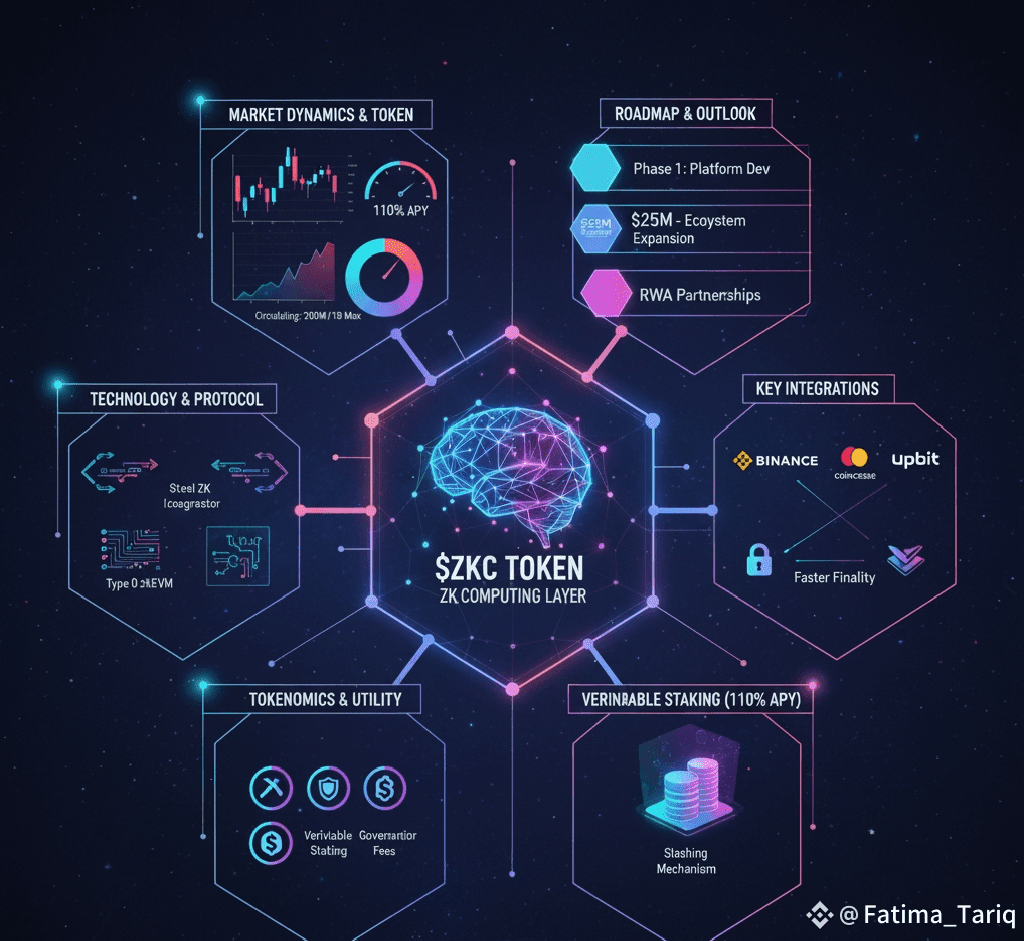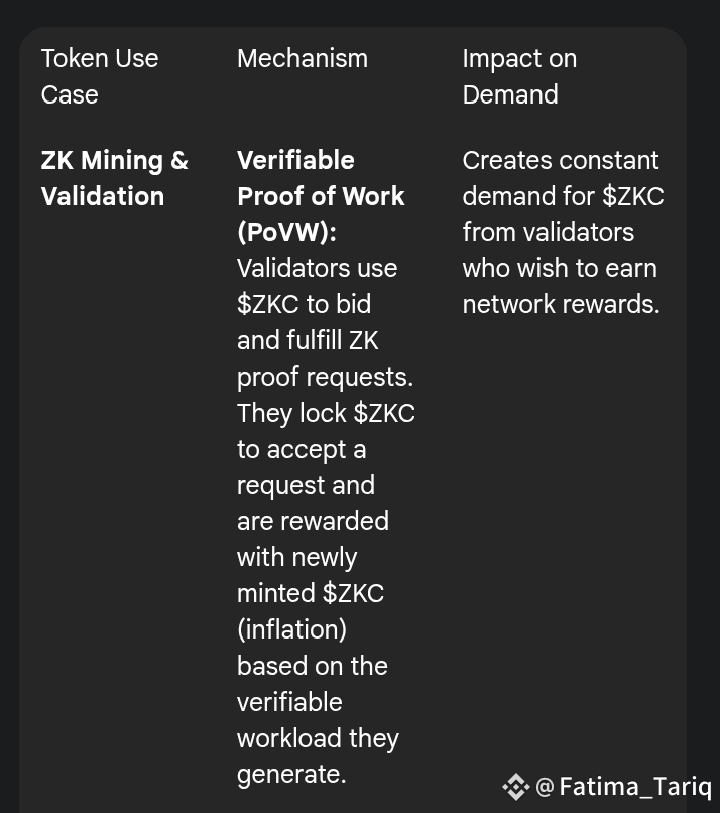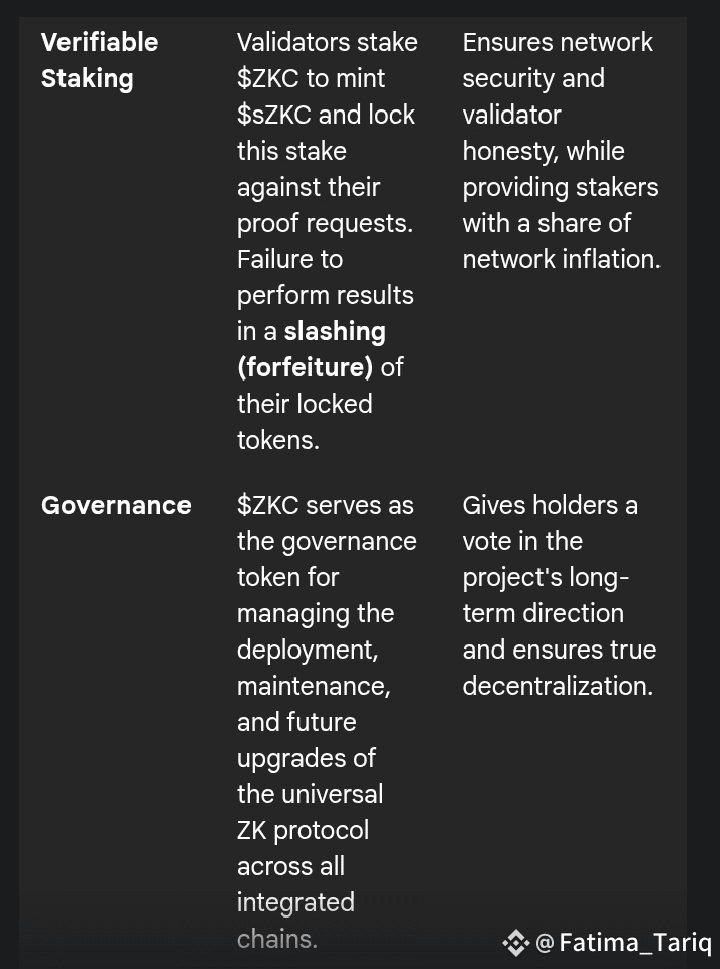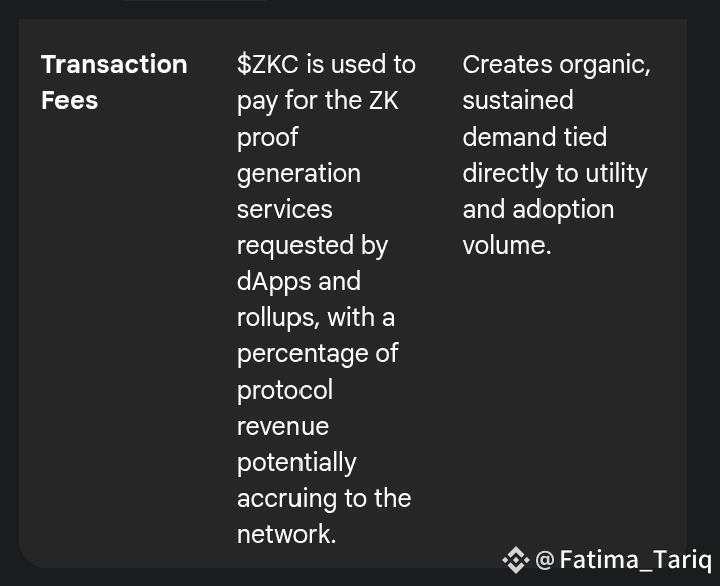 The Boundless Network ($ZKC) has rapidly moved from a highly-anticipated project to a fully operational layer in the decentralized landscape, positioning itself as a critical middleware for the Zero-Knowledge (ZK) revolution. Recent market activity and fundamental developments in late 2025 paint the picture of a project making a definitive push to become the universal ZK orchestration layer across all major blockchain ecosystems.
The Boundless Network ($ZKC) has rapidly moved from a highly-anticipated project to a fully operational layer in the decentralized landscape, positioning itself as a critical middleware for the Zero-Knowledge (ZK) revolution. Recent market activity and fundamental developments in late 2025 paint the picture of a project making a definitive push to become the universal ZK orchestration layer across all major blockchain ecosystems.
Here is a comprehensive look at the new updates from the market, technology, and broader ecosystem:
1. Market Dynamics and Major Listings: A Volatile Debut
The market for ZKC has been characterized by intense volatility following a flurry of major exchange listings, a common phenomenon for newly launched tokens.
Tier-1 Exchange Endorsements: The token secured listings on Binance, Coinbase (as an experimental asset), and Upbit in mid-September 2025. Such top-tier endorsements significantly boost global accessibility, liquidity, and perceived credibility.
Price Action and Initial Sell Pressure: Despite the high-profile listings, the ZKC price has seen significant sell-off pressure, trading substantially below its initial Upbit listing floor in the subsequent weeks. This is likely due to:
Airdrop Distribution: The distribution of tokens to early participants, often resulting in immediate profit-taking.
Market Fragmentation: The initial price disparity across exchanges (e.g., Upbit's minimum sell price being much higher than the global average) indicated localized liquidity issues and high volatility.
Current Metrics: As of late September 2025, the token has a circulating supply of approximately 200 million ZKC out of a 1 billion total supply. Its market cap reflects the post-listing correction, indicating the market is still searching for a stable valuation amid utility adoption.
Staking and APY: To counter immediate selling and incentivize long-term holding, Boundless has launched mainnet staking, offering a high Annual Percentage Yield (APY) of 110%. This feature allows ZKC holders to secure the network and participate in governance, shifting focus from speculative trading to long-term network participation.
2. Technology & Protocol Breakthroughs: The ZK Orchestration Layer
Boundless Network’s core value lies in its decentralized protocol designed to offload and manage complex Zero-Knowledge Proof (ZKP) computation, making it accessible and cost-effective for any blockchain.
Universal ZK Protocol: Boundless aims to be a cross-chain (or 'universal') zero-knowledge protocol, deploying its settlement and validator contracts across multiple chains to bring ZK power everywhere, without requiring dApps to migrate.
OP Kailua Rollup Integration: A significant update involves the integration of the OP Kailua Rollup Integration. This upgrade enables Optimism-based rollups to adopt ZK proofs for faster finality (reducing finality times from days to hours). By supporting both hybrid fraud proofs and full validity proofs, Boundless is cementing its role as a key infrastructure provider for the expanding Optimism ecosystem (OP Stack).
Steel ZK Coprocessor Update: The ZKC team has enhanced its Steel ZK Coprocessor, a solution that allows Ethereum Virtual Machine (EVM) dApps to perform heavy computations off-chain while maintaining a fixed, low on-chain gas cost. The new update supports multi-block state extraction, which enables dApps to query historical data across chains efficiently.
Type 0 zkEVM Upgrade: Boundless integrated RISC Zero's zkVM to introduce a "Type 0" zkEVM capability. This allows nodes to generate and verify proofs for Ethereum block validity without re-executing transactions, significantly reducing computational overhead. This positions ZKC as a critical middleware for lightweight clients and cross-chain bridges.
3. Tokenomics and Utility: Driving Network Demand
The ZKC token is engineered with a multi-faceted utility model, directly linking the token's demand to the growth and security of the Boundless Network.



4. Roadmap and Future Outlook: A Focus on RWA and Decentralization
Boundless has outlined a clear, three-phase roadmap focused on scaling its technology and achieving full decentralization.
Phase 1: Platform Development (Completed/In Progress): Focused on securing the core technological foundation, including the Mainnet Launch, finalizing smart contracts, and conducting security audits. This phase establishes the trust and validity of the ZK technology.
Phase 2: Ecosystem Expansion: The focus shifts to creating network effects. Key milestones include launching developer grant programs to attract dApps, establishing strategic partnerships (especially for Real-World Asset (RWA) tokenization), and building essential DeFi primitives on the network. This phase drives utility and adoption.
Phase 3: Decentralization and Governance: The final phase aims to hand over control to the community, implementing Full DAO Governance and Sequencer Decentralization to eliminate reliance on a central entity. This ensures the project's long-term sustainability and censorship resistance.
In Summary:
Boundless Network ($ZKC) has successfully launched its core infrastructure and secured high-profile exchange listings, validating its position in the ZK-Rollup narrative. While the initial market price has experienced a predictable correction post-launch/airdrop, the fundamental developments—including the mainnet staking launch (110% APY), OP Stack integration, and Steel Coprocessor updates—demonstrate a strong commitment to becoming the leading provider of universal, verifiable ZK computation for the entire Web3 ecosystem. The coming months will be defined by the success of its ecosystem expansion efforts (Phase 2), particularly in attracting developers and securing RWA partnerships.




